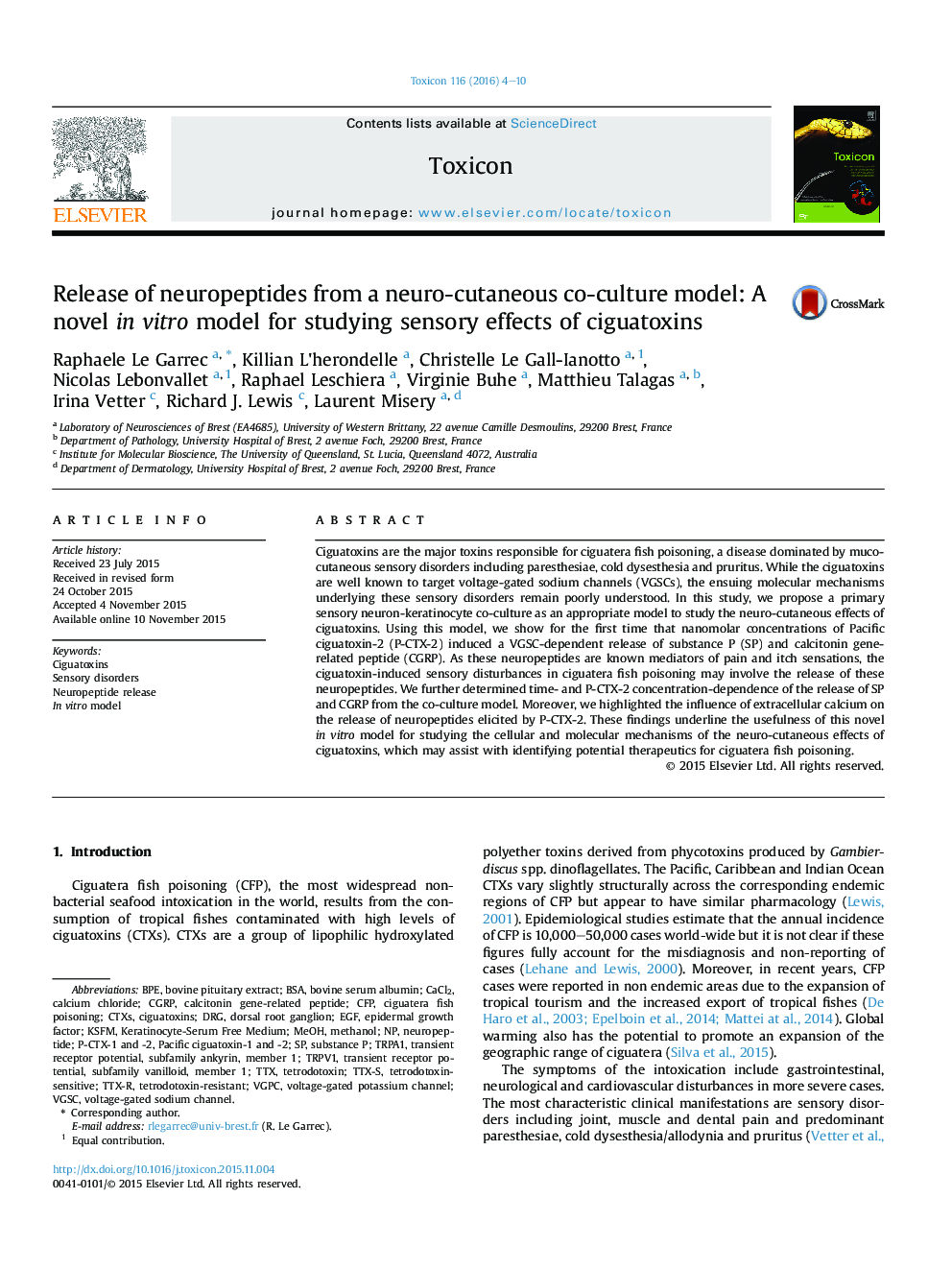| Article ID | Journal | Published Year | Pages | File Type |
|---|---|---|---|---|
| 2064196 | Toxicon | 2016 | 7 Pages |
•A novel co-culture model is proposed for studying neuro-cutaneous effects of CTXs.•Nanomolar concentrations of P-CTX-2 induced SP and CGRP release from the co-culture.•The release of neuropeptides induced by P-CTX-2 involved TTX-resistant VGSCs.•Increasing the external [Ca2+] greatly potentiated the P-CTX-2-elicited NP release.
Ciguatoxins are the major toxins responsible for ciguatera fish poisoning, a disease dominated by muco-cutaneous sensory disorders including paresthesiae, cold dysesthesia and pruritus. While the ciguatoxins are well known to target voltage-gated sodium channels (VGSCs), the ensuing molecular mechanisms underlying these sensory disorders remain poorly understood. In this study, we propose a primary sensory neuron-keratinocyte co-culture as an appropriate model to study the neuro-cutaneous effects of ciguatoxins. Using this model, we show for the first time that nanomolar concentrations of Pacific ciguatoxin-2 (P-CTX-2) induced a VGSC-dependent release of substance P (SP) and calcitonin gene-related peptide (CGRP). As these neuropeptides are known mediators of pain and itch sensations, the ciguatoxin-induced sensory disturbances in ciguatera fish poisoning may involve the release of these neuropeptides. We further determined time- and P-CTX-2 concentration-dependence of the release of SP and CGRP from the co-culture model. Moreover, we highlighted the influence of extracellular calcium on the release of neuropeptides elicited by P-CTX-2. These findings underline the usefulness of this novel in vitro model for studying the cellular and molecular mechanisms of the neuro-cutaneous effects of ciguatoxins, which may assist with identifying potential therapeutics for ciguatera fish poisoning.
